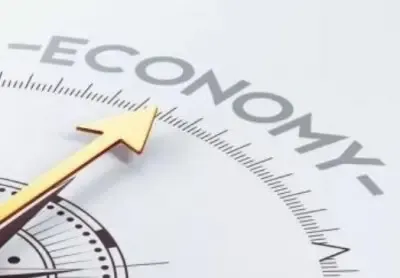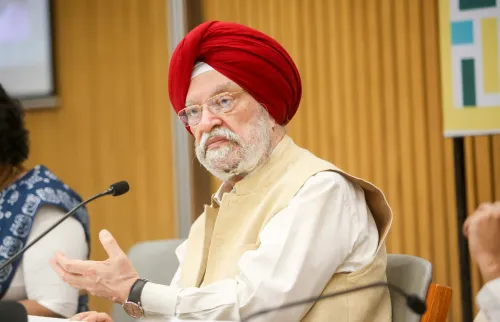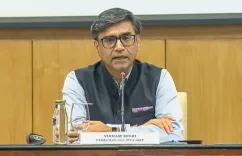Is India's GDP Growth Projected at 6.7% in Q1 FY26?

Synopsis
Key Takeaways
- Projected GDP growth of 6.7% for India in Q1 FY26.
- Urban consumption is expected to rise due to monetary easing.
- Services GVA growth reaching an eight-quarter high of 8.3%.
- Improvement in rural sentiments indicates a positive outlook.
- Government spending plays a crucial role in economic expansion.
New Delhi, Aug 19 (NationPress) India is projected to achieve a 6.7 percent growth in the first quarter of the current fiscal year (FY26), surpassing the recent estimate of 6.5 percent provided by the RBI Monetary Policy Committee (MPC), according to a report from credit rating agency ICRA released on Tuesday.
The agency's analysis anticipates that the growth in the gross value added (GVA) will reach 6.4 percent in Q1 FY2026.
Enhanced transmission of monetary easing, along with the recent announcement regarding upcoming GST rationalisation, is expected to bolster urban consumption sentiments in time for the festive season, the report noted.
“ICRA forecasts a significant growth in net indirect taxes (in nominal terms), supported by a sharp increase in the Government of India's indirect taxes (11.3 percent in Q1 FY26 compared to -3.1 percent in Q4 FY2025), despite a narrower contraction in subsidy expenditure,” stated Aditi Nayar, Chief Economist and Head of Research and Outreach at ICRA.
“With strong government capital and revenue spending, increased exports to select regions, and initial signs of improved consumption, the economic activity growth rate in Q1 FY2026 is projected at 6.7 percent,” Aditi Nayar elaborated.
The agency predicts that year-on-year growth in services GVA will rise to an eight-quarter high of 8.3 percent in Q1 FY26, up from 7.3 percent in Q4 FY25, thereby supporting overall GVA growth for that quarter.
Moreover, the combined non-interest revenue expenditure of 24 state governments reported a year-on-year growth of 10.7 percent in Q1 FY26, an increase from 7.2 percent in Q4 FY25.
In a similar vein, the Central government's non-interest revenue expenditure saw a positive shift, recording a year-on-year growth of 6.9 percent after a contraction of 6.1 percent in the previous quarter, according to the report.
Rural sentiments, reflected in the Current Situation Index (CSI), showed further improvement in July 2025 (100.6) during the RBI's Rural Consumer Confidence Survey, indicating positive trends in farm output over the past two cropping seasons and an optimistic outlook for the ongoing kharif season, along with a significant decrease in rural CPI inflation.








